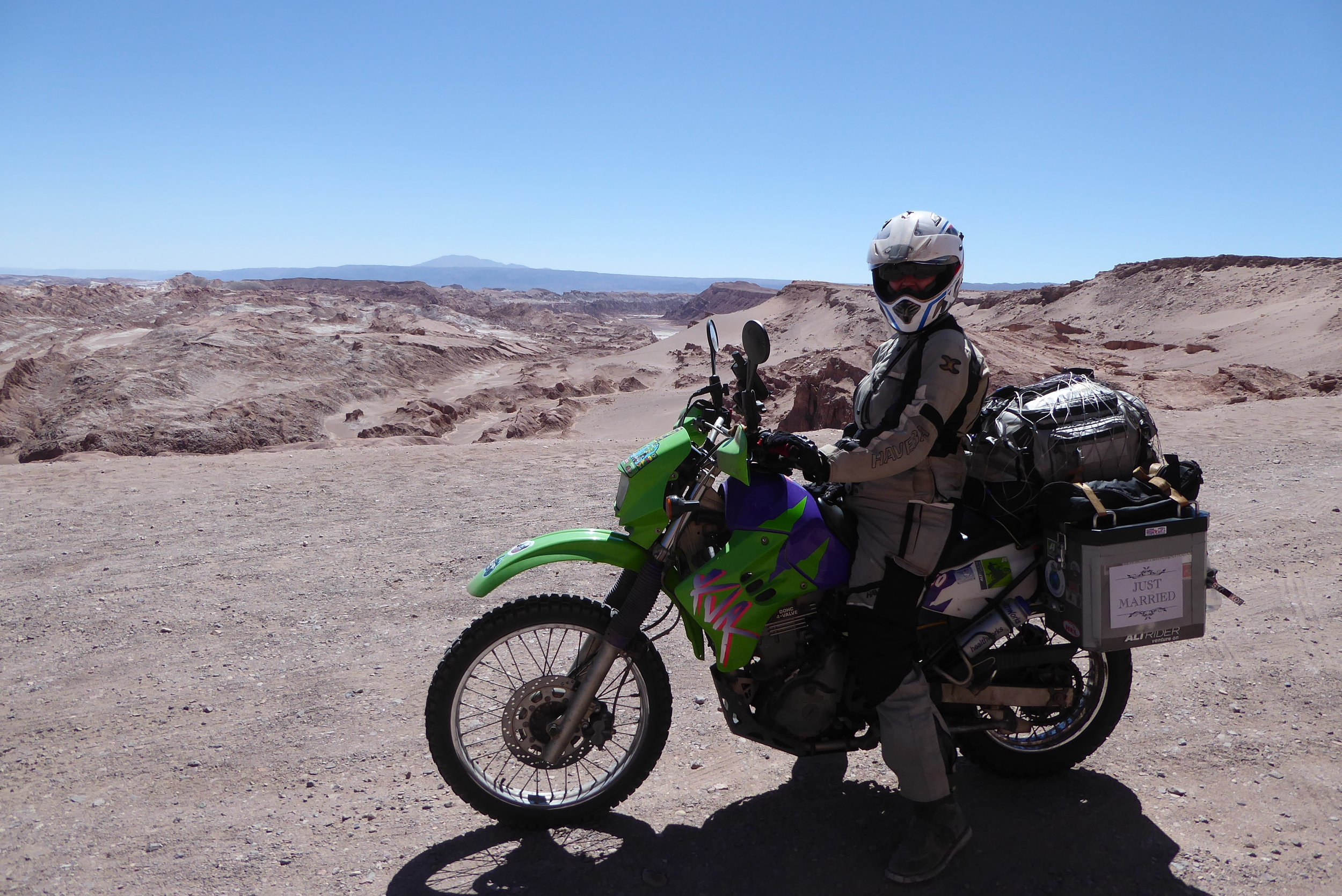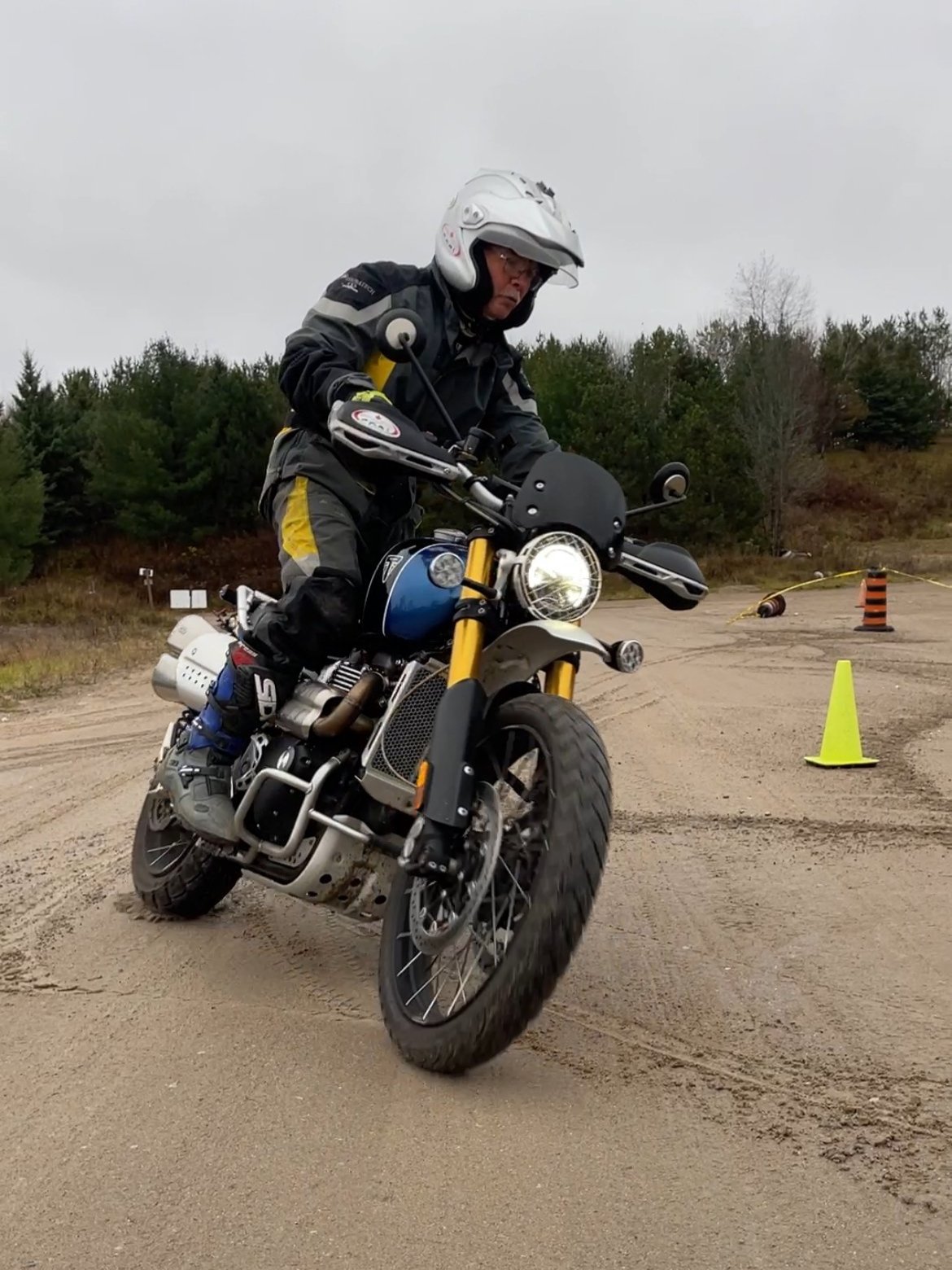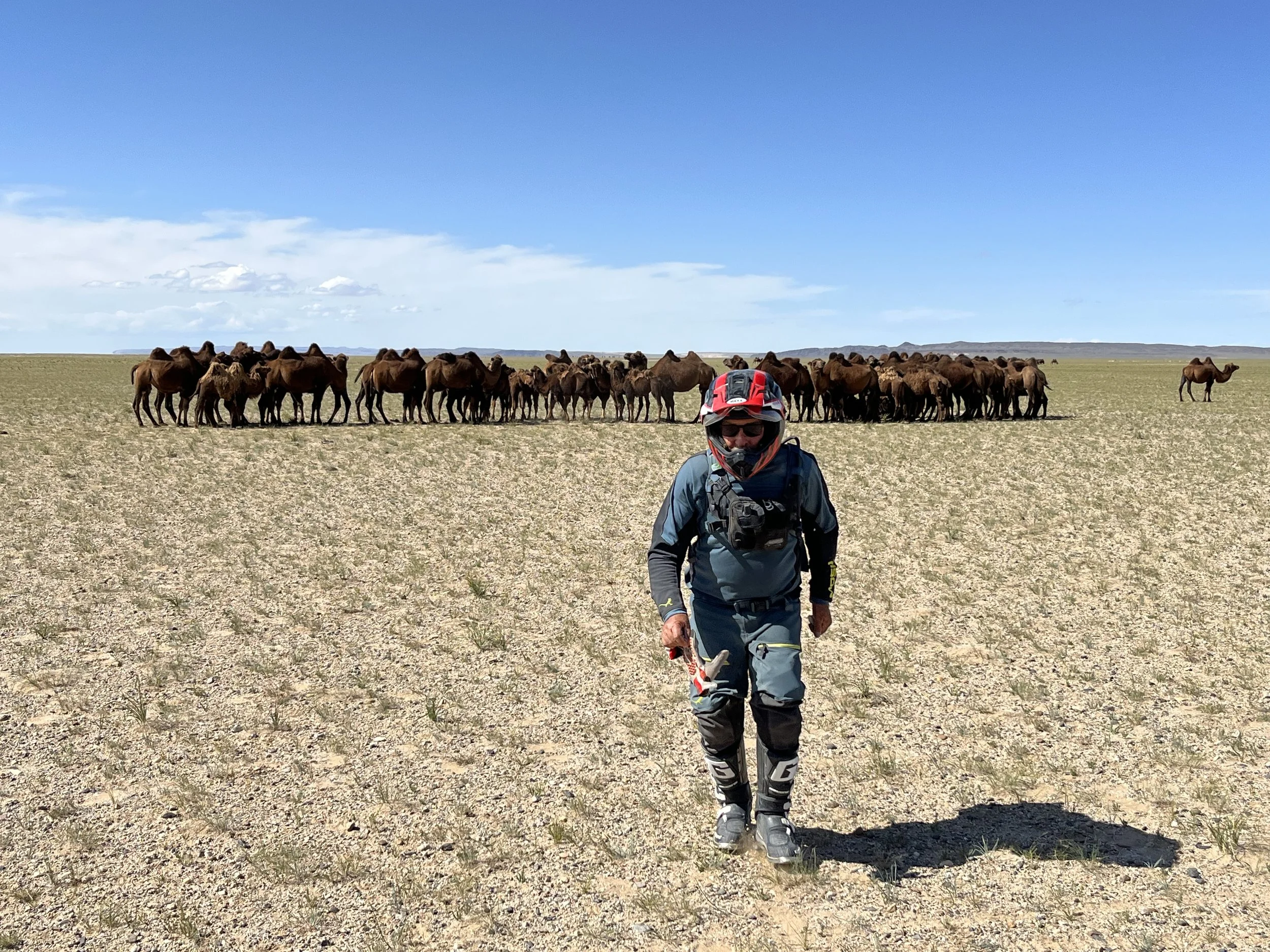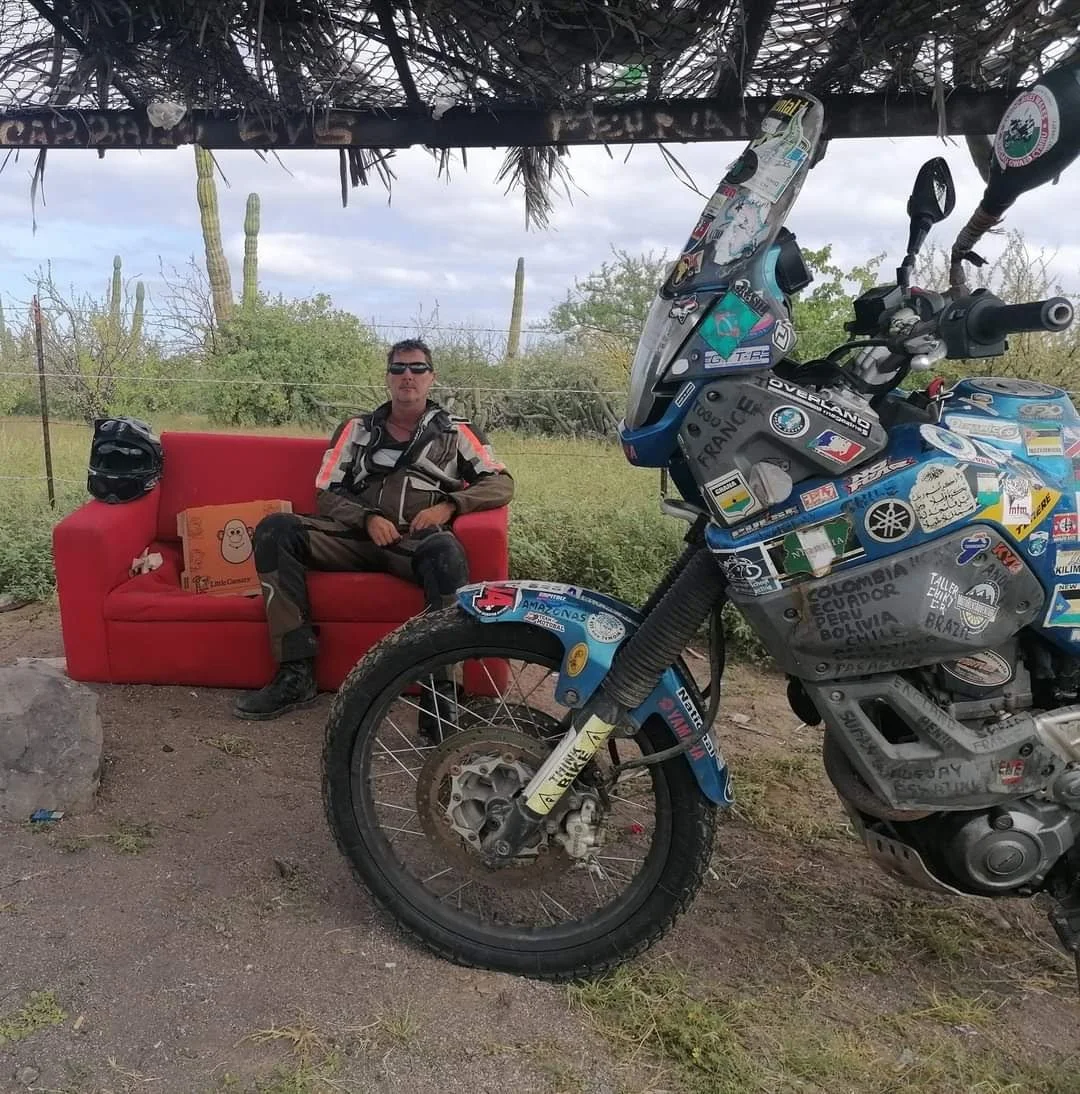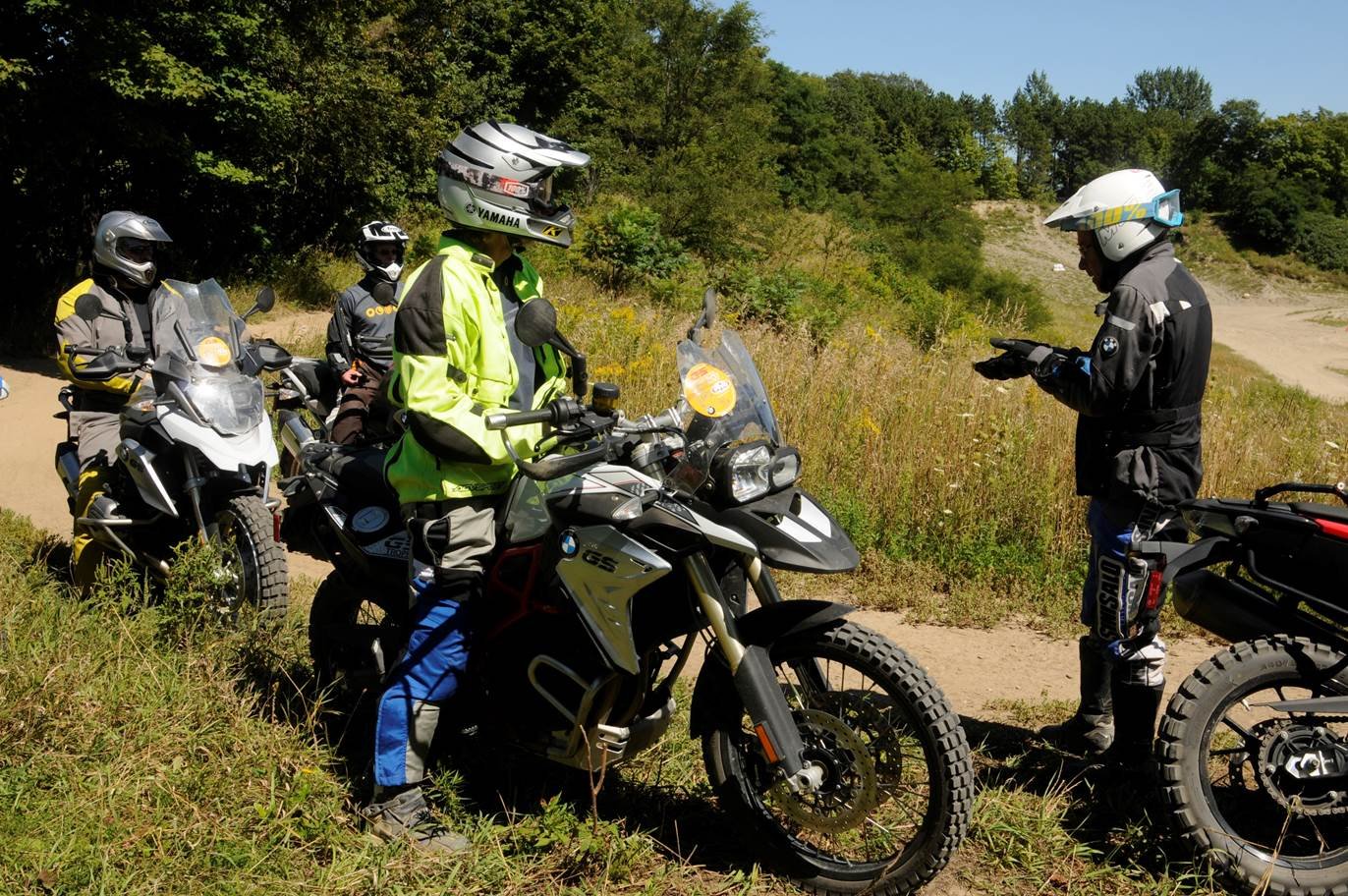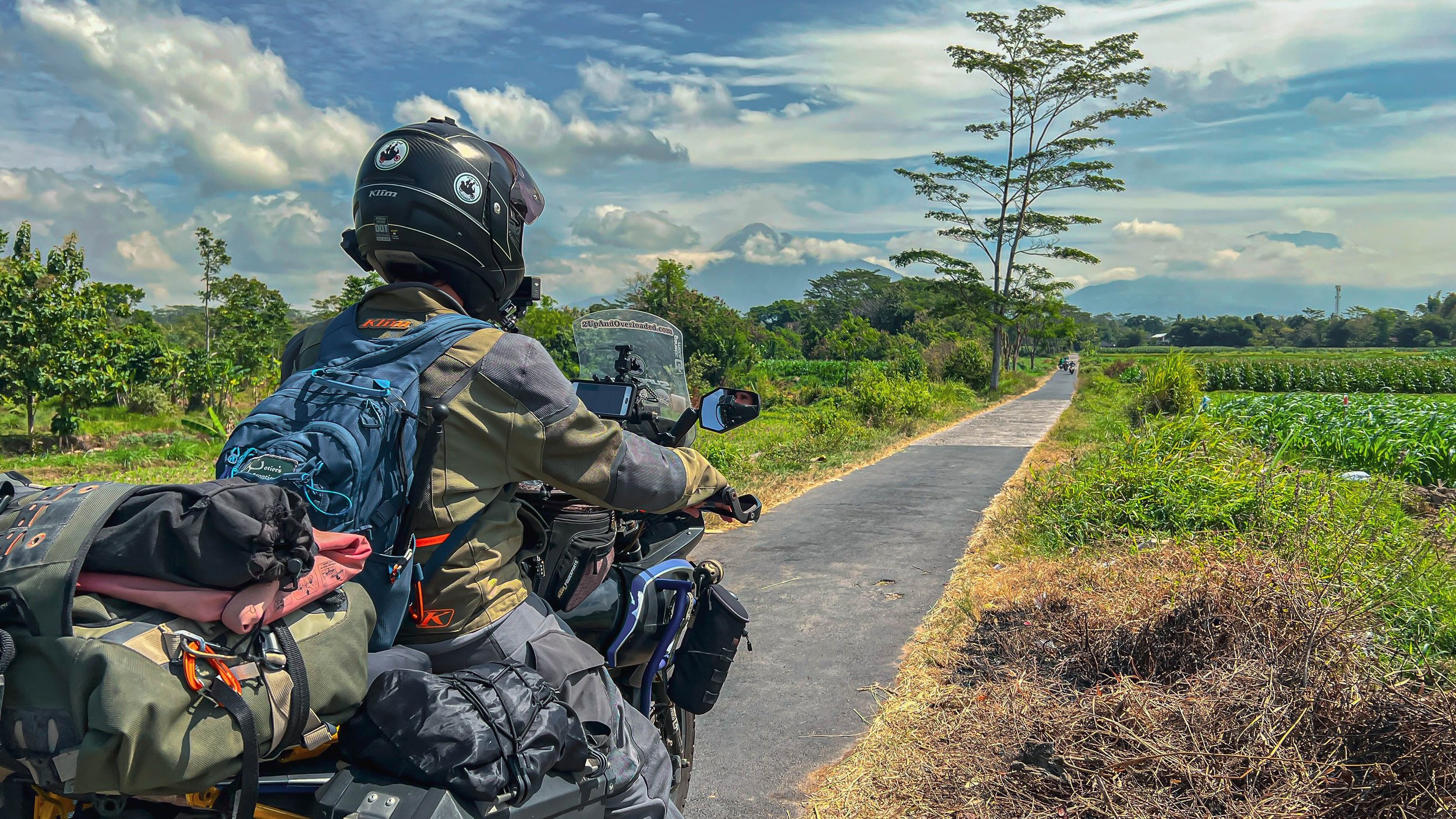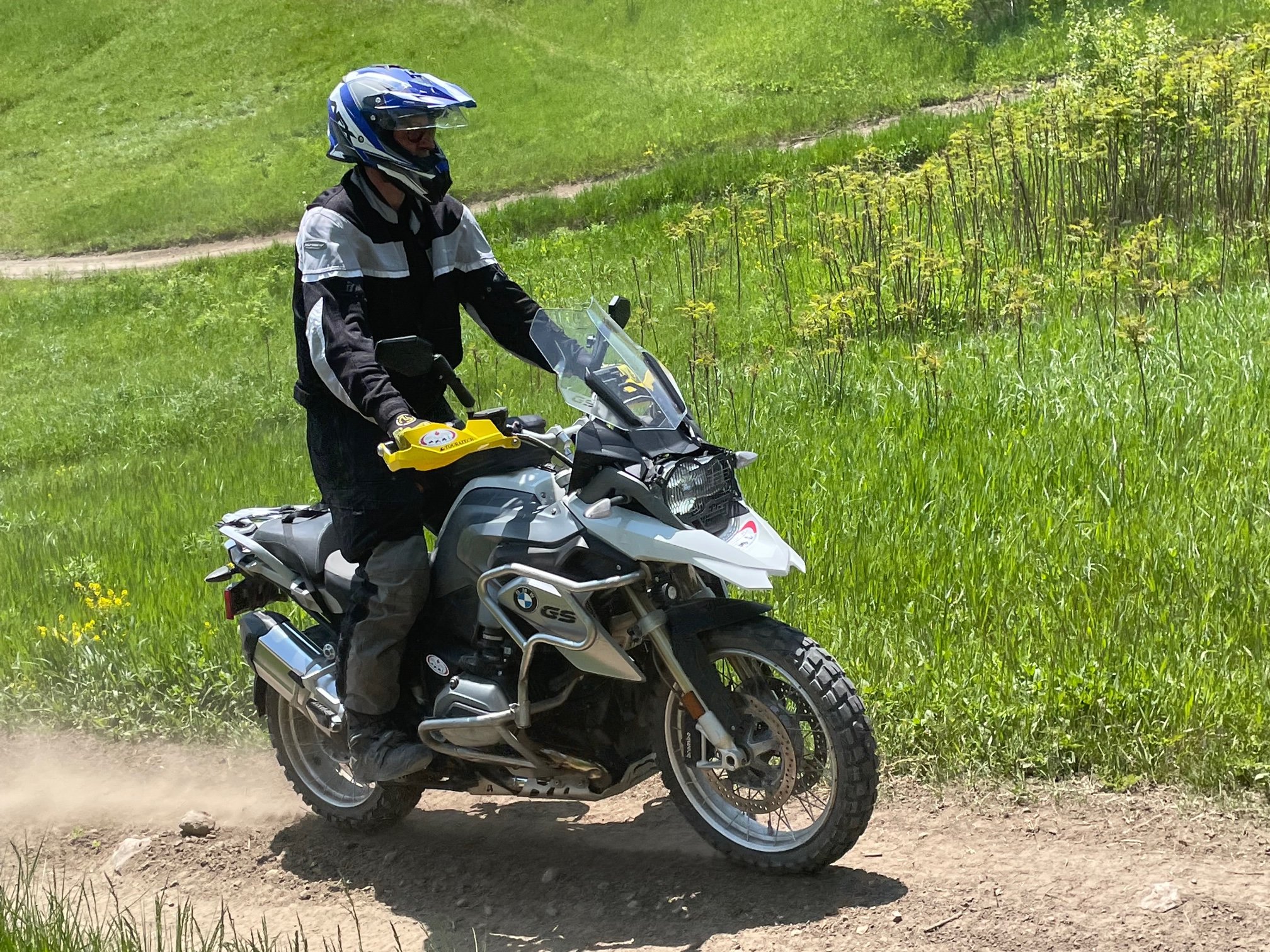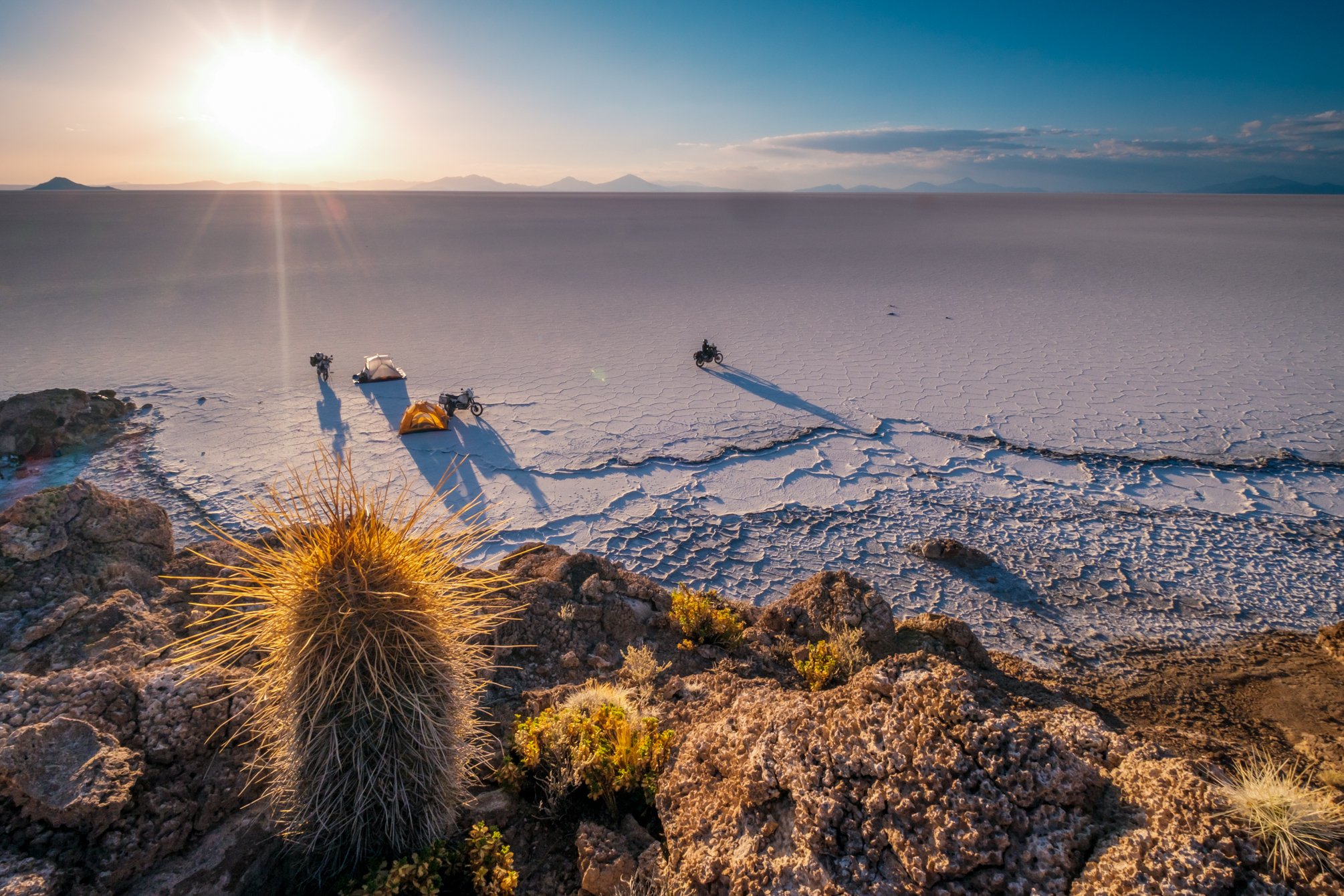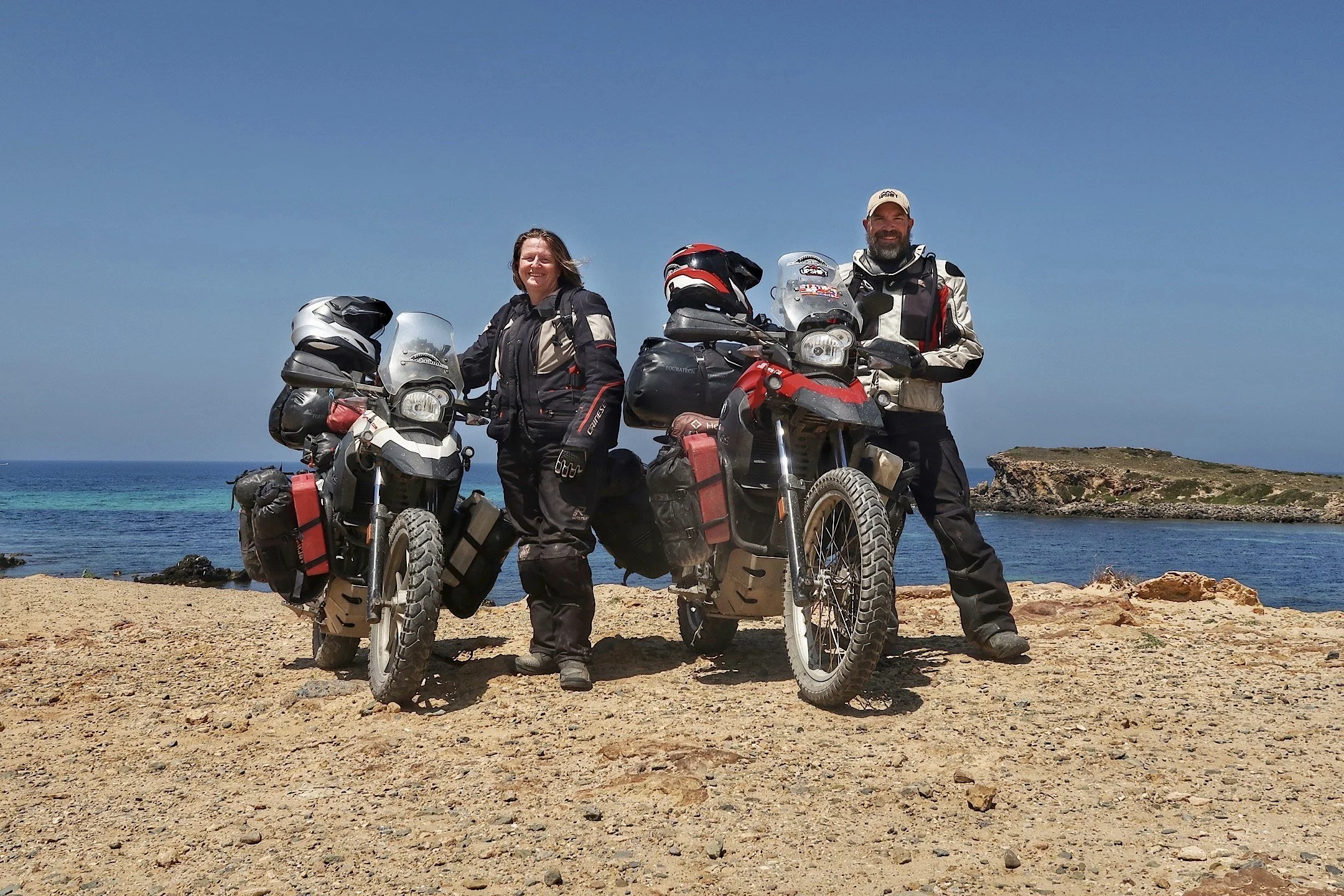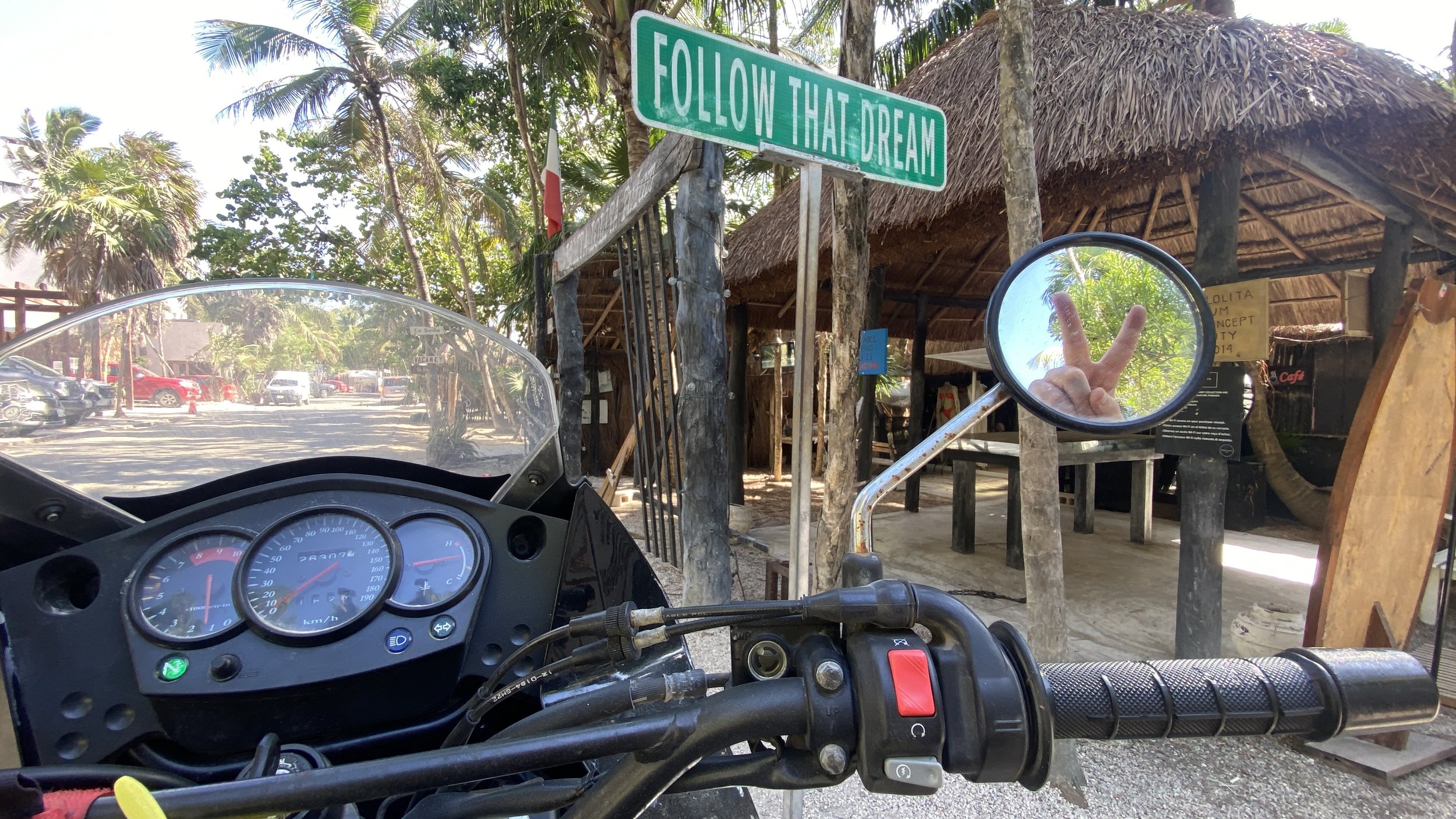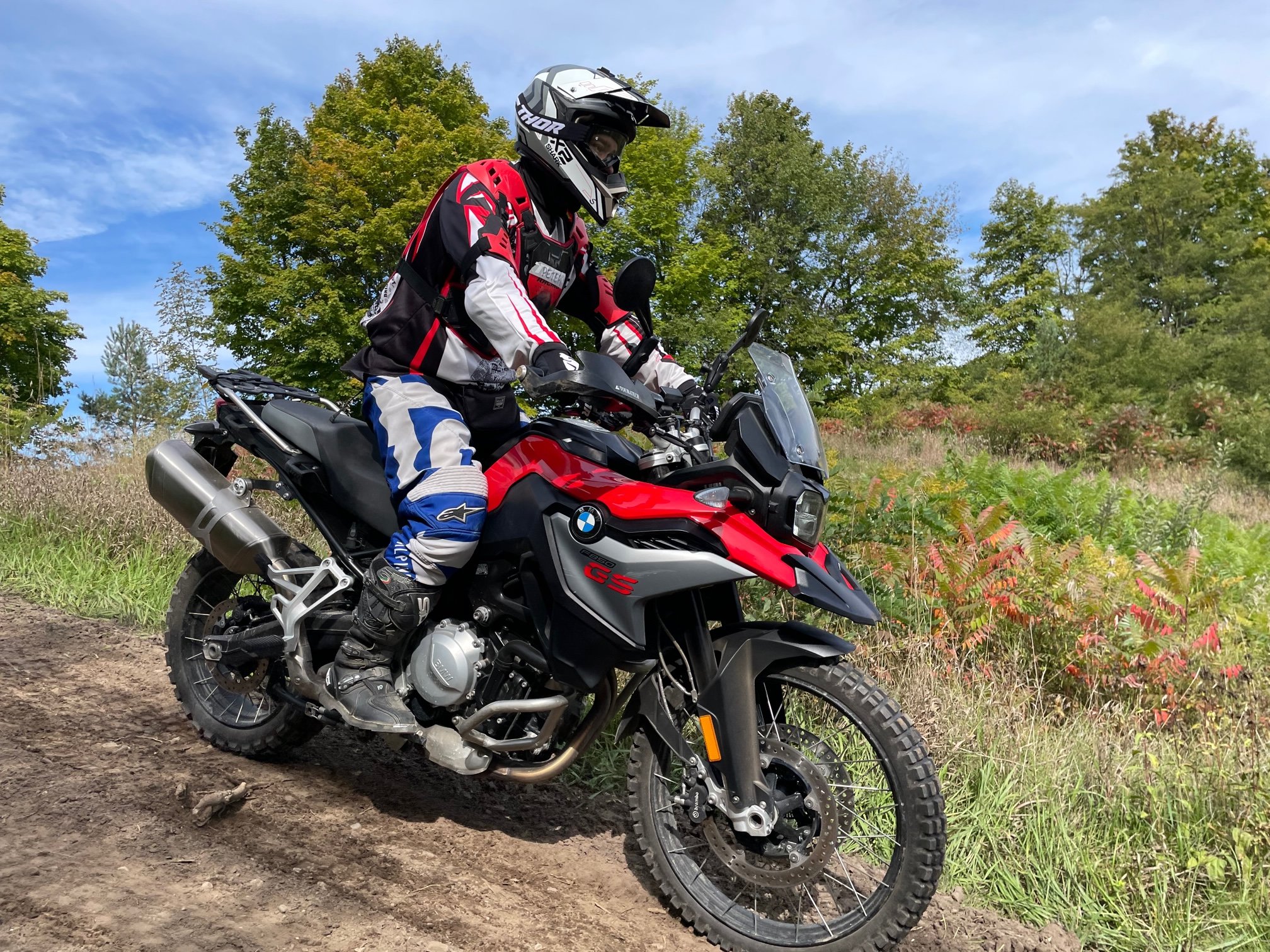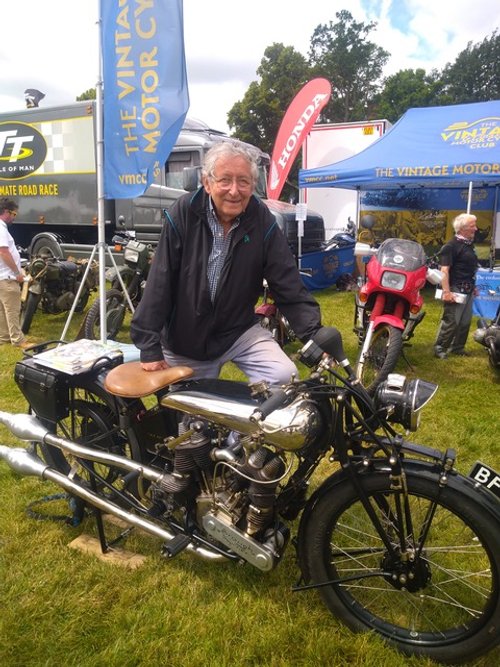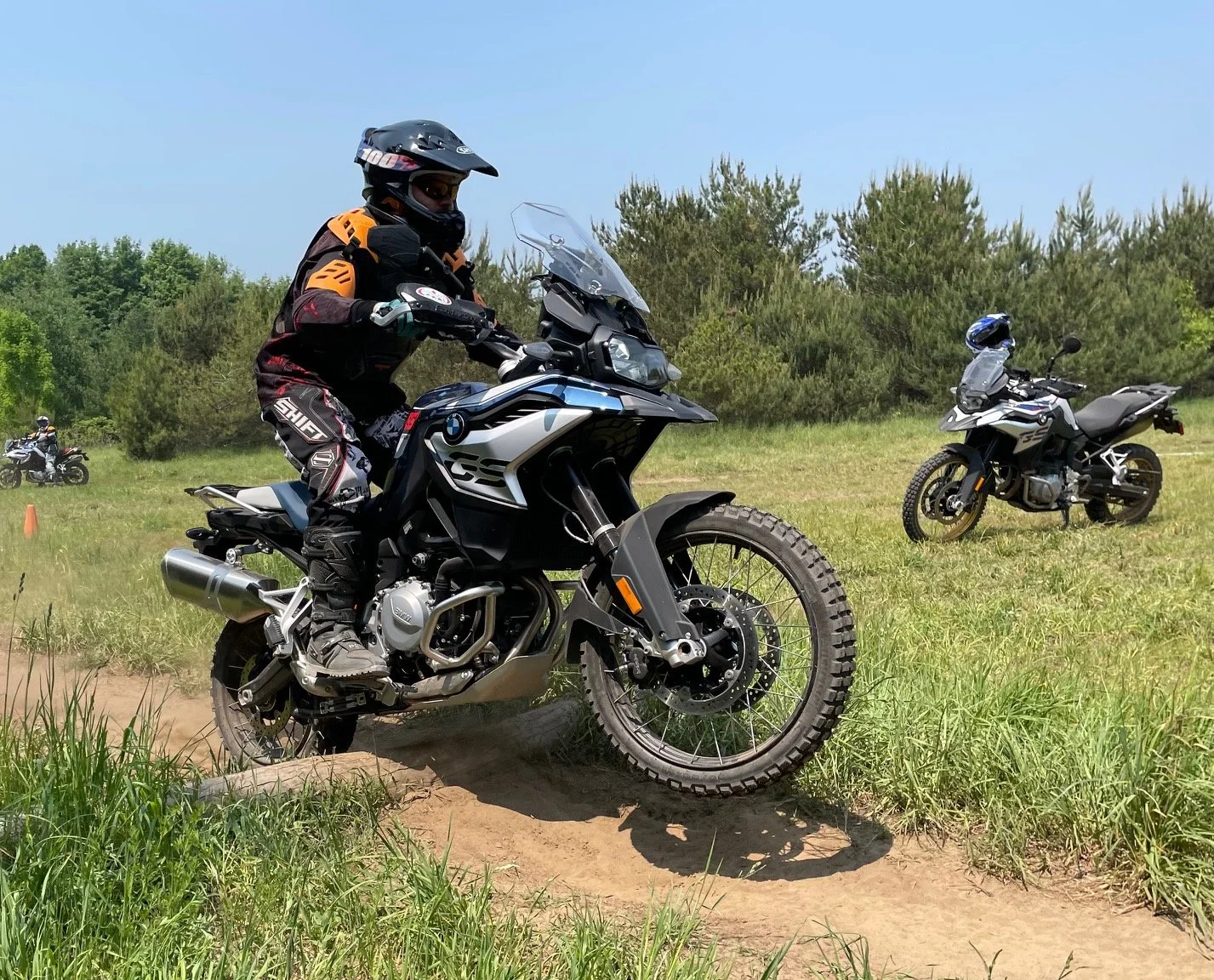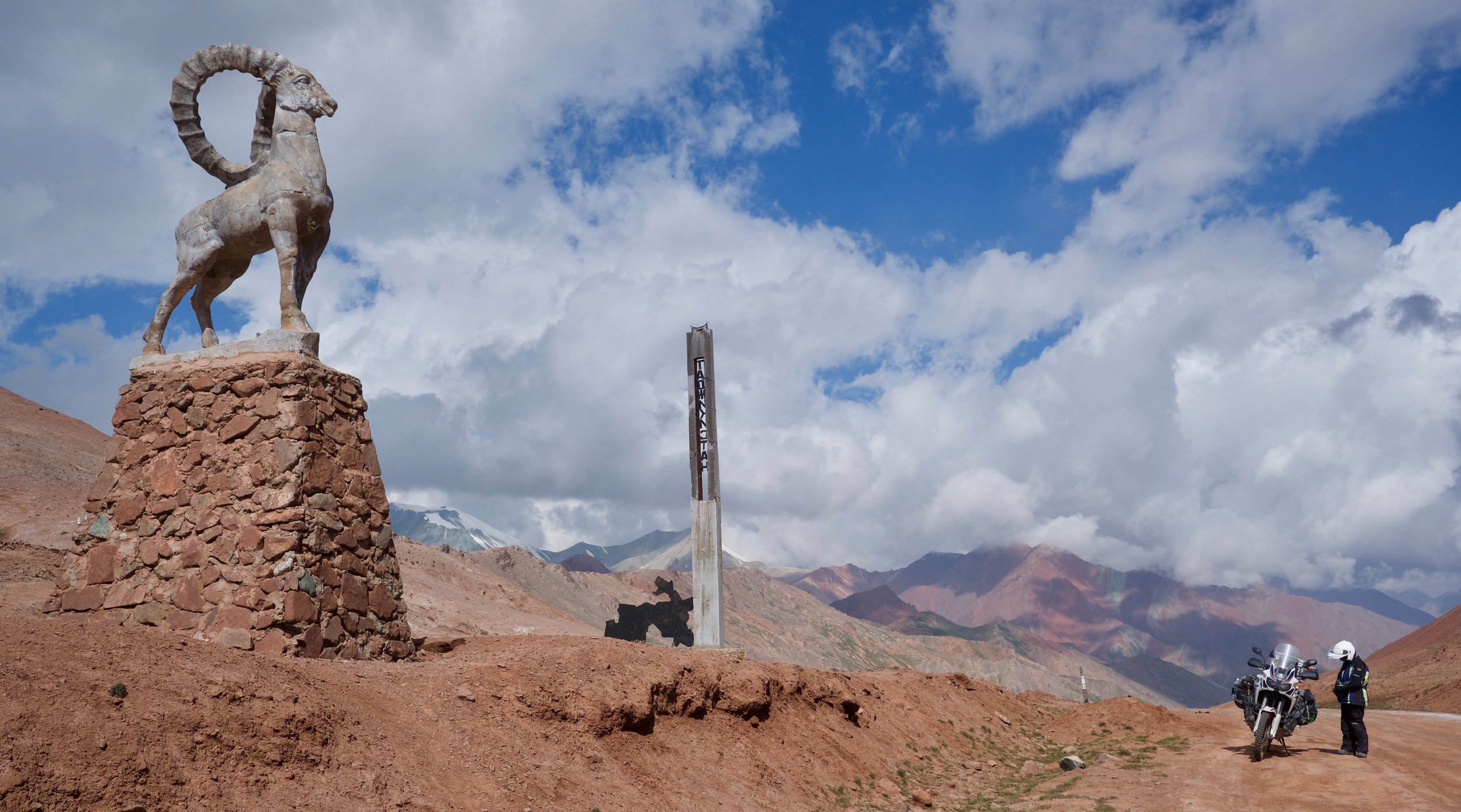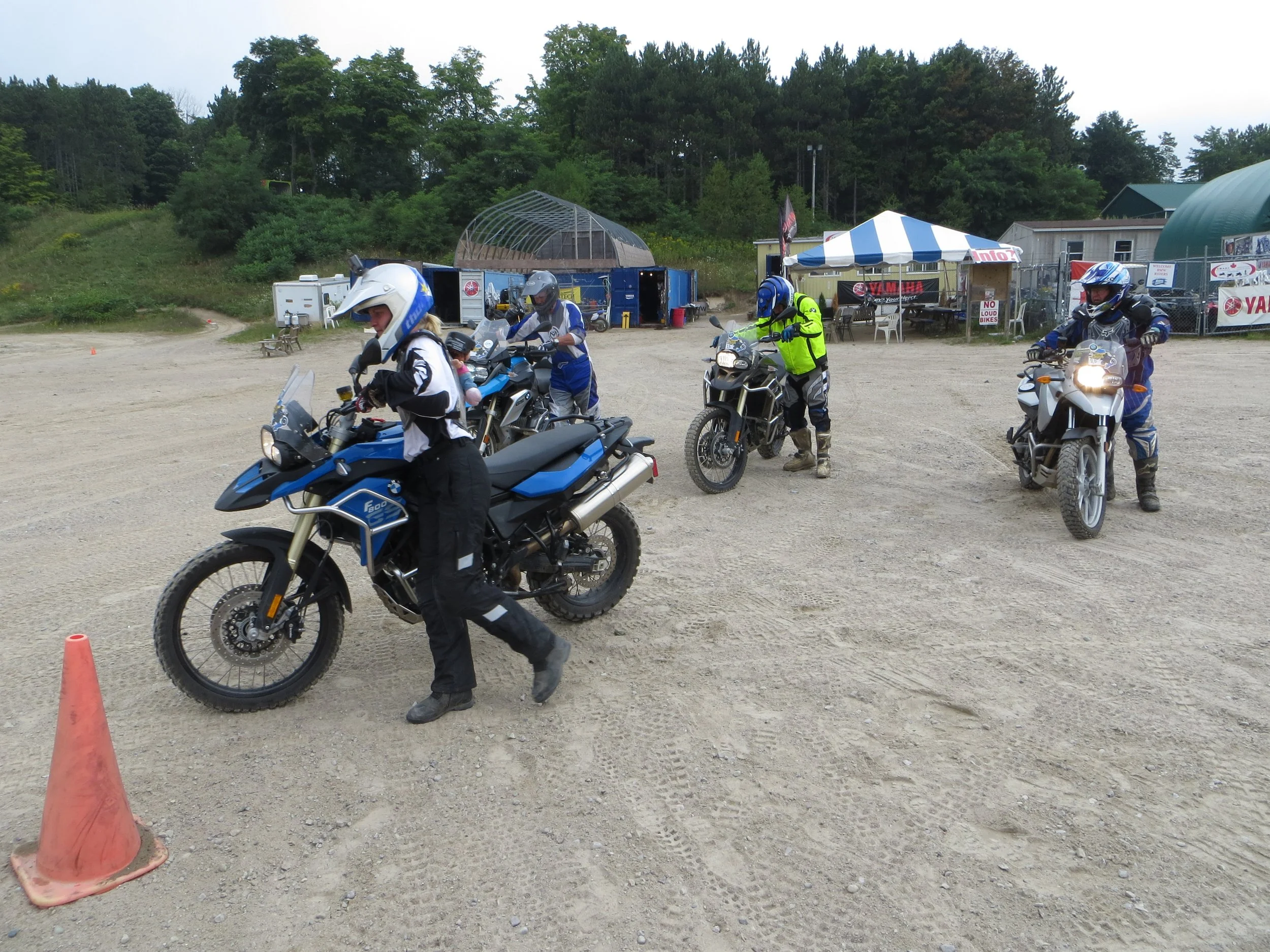2023 Motorcycle Podcast Episodes
Stories, Tech, Skills Each Week On Adventure Rider Radio
Adventure motorcycling is an exhilarating and adrenaline-fueled pursuit that combines the freedom of the open road with the thrill of exploration. Unlike conventional road trips, adventure motorcycling ventures off the beaten path, taking riders through rugged terrains, remote landscapes, and challenging conditions. It embodies the spirit of adventure, pushing riders to embrace the unknown and test their limits. Whether traversing majestic mountain passes, navigating dense jungles, or crossing vast deserts, adventure motorcyclists find themselves immersed in a world of unparalleled beauty and natural wonder.
Beyond the physical challenges, this thrilling activity fosters a deep connection with nature and a profound sense of self-discovery. Riding through picturesque landscapes, encountering diverse cultures, and conquering obstacles along the way forge unforgettable memories that leave a lasting impression on the adventurous soul. Adventure motorcycling, a fusion of passion, exploration, and daring, is a gateway to experiencing life's most extraordinary moments on two wheels.
Throughout the year, we find ourselves busy with various tasks that are necessary for us to live and get by. At times, it can feel like we are stuck in a never-ending cycle of doing the same things repeatedly. As we approach the end of the year, we begin to reflect on how quickly it has gone by, and how quickly every year seems to pass. But, what if there was a way that you could use your motorcycle to slow down the passage of time?
Going on a motorcycle adventure triggers the excitement of preparing yourself and your bike. Selecting the perfect jacket and pants, and even contemplating the ideal bag for your top box becomes part of the immersive experience. And for many there’s a satisfaction in knowing that their bikes and gear are meticulously prepared, ensuring they’re equipped with top-notch quality where it matters. However, there exists an entirely different approach, embraced by those who simply hop on their bikes and venture into remote areas with older motorcycles and non-technical gear. This somewhat minimalist approach is their version of thorough preparation, and it works remarkably well for them. Two seemingly polar opposite pre-trip approaches—one meticulously detailed and modern, the other laid-back and relatively minimalistic. It appears that Nick Adams, an adventure rider from Eastern Ontario, Canada, aligns more with the latter description—a testament to the diversity of approaches for gearing up for the open road.
This episode of RIDER SKILLS is for all riders, regardless of the type of bike you ride or your riding style. Some simple drills that can be done on any surface, be it dirt or pavement. Do them before heading out on a ride, while waiting for a friend, or even when approaching a stop sign or traffic light. These are simple straightforward drills that require no pre-planning, no specific location, and each one will help develop multiple skills at once.
In this exclusive series, we’ll explore the captivating stories of riders who found themselves in DEEP TROUBLE. We'll be dissecting these situations, shedding light on the challenges they faced, the strategies they used and the valuable lessons they learned. Most critically, we’ll discuss how the situation could have turned out differently if some controllable aspects were changed. We’ll talk about the possibilities and potential outcomes, so that perhaps other riders can learn from their experiences and avoid making those mistakes that get them into DEEP TROUBLE. Join adventure travelers Chad Horton and Rose Padilla, along with Spencer Conway and Cathy Nell from African Motorcycle Diaries, as they face perilous challenges in this episode of DEEP TROUBLE.
Lorraine Spence is an avid traveler who rediscovered her love for riding motorcycles after a two decade hiatus. She decided her first big trip in 2012 would be across Asia via the BAM road in Siberia, which could be considered one of the last challenges for adventure motorcyclists. The BAM road is a dilapidated service road for the railway in Siberia that requires planning, determination, and a bit of luck to overcome.
Israel Eugene Gillette is an extreme motorcycle enthusiast and has been travelling to different countries around the world with a dog in his panier for well over a decade. Since he first started riding in 1995 Israel has found himself running from the police, accused of kidnapping and being shot at. Whether trouble finds Israel or he finds trouble himself is a matter of debate, but his adventures are sure to amuse you and make you question why he does what he does.
After months of planning, John Ciribassi headed out on his first Backcountry Discovery Route adventure in Colorado with three riding buddies. The journey took an unexpected turn on day one when inexperienced in pavement riding, a distracted John misjudged a fast-approaching corner, panicked and locked up the front brake. He collided with the corner of a horse trailer being pulled by a semi-truck. Miraculously escaping with only mild road rash, the incident served as a wake-up call about the importance of skills like counter-steering. And to explain counter-steering, we asked MSF Coach, Jon DelVecchio, to shed light on this essential skill that can make a significant difference in navigating corners safely and efficiently.
When riding on slippery surfaces, the risk of the rear wheel sliding out from under the bike is ever-present. Whether due to excessive braking or spinning out from rapid acceleration, the rear wheel's speed can cease to match the speed over the ground, causing it to stray from following the front wheel. Without adequate preparation and practice, this situation could lead to a potentially dangerous high side. However, with a grasp of the fundamentals and some diligent practice, managing this occurrence can transform from a potential hazard to an exhilarating experience—one that you might intentionally seek out for the thrill.
Some time back, we interviewed Tom Medema from Rally for Rangers, an organization that delivers motorcycles to rangers around the world, to help them safely and successfully protect parks from poachers, illegal tree cutting, manual mineral extractions, and other violations. When 71-year-old Lester Appel heard the episode with Tom, he decided to take action and apply to join the 9-day motorcycle trip across Mongolia with Rally for Rangers. On this journey a group of volunteer riders would donate and deliver motorcycles to the rangers in Southern Mongolian National Parks. Not only would Lester play a part in helping the rangers preserve the precious parklands they were protecting, but he would also have the adventure of a lifetime riding through some of the world’s most challenging terrain. But, just two days in to the trip, Lester had a crash that could have changed everything for him.
In this exclusive series, we’ll explore the captivating stories of riders who found themselves in DEEP TROUBLE. We'll be dissecting these situations, shedding light on the challenges they faced, the strategies they used and the valuable lessons they learned. Most critically, we’ll discuss how the situation could have turned out differently if some controllable aspects were changed. We’ll talk about the possibilities and potential outcomes, so that perhaps other riders can learn from their experiences and avoid making those mistakes that get them into DEEP TROUBLE.
Brendon and Kira Hak have been living a nomadic lifestyle for the past six years. Kira has always had a passion for travel and Brendon for motorsports, so after a couple of life-altering events made them reevaluate what they were doing in their lives, they decided to do the big trip they had dreamed about. They spent years planning and in 2017 they set out for their motorcycle trip from Canada to Ushuaia. The plan was to be gone for about one year, but when they returned home after nearly two years they had a different perspective on life and they knew that travel was something they wanted to continue doing. If they wanted to keep going they knew that now was the time to make it happen, and if they could do it, then why wouldn’t they?
Riding a motorcycle through challenging terrain can be extremely satisfying, but even with experience, things can go wrong, and you may find yourself picking up your motorcycle from the ground. On today’s episode of Adventure Rider Radio’s exclusive RIDER SKILLS program, we have Clinton Smout from SMART Adventures sharing five techniques to help you pick up your motorcycle. You can choose the one or two that suit your style or learn all of them to use in different situations.
Helen Lloyd’s expectations and views on travel have changed over the course of almost two decades of travelling. Some years ago, Helen had embarked on a solo bicycle trip around Africa, which had turned out to be the trip of a lifetime, leaving her with a desire to return. When Helen decided to travel to Africa again, she opted to ride her motorcycle and share the journey with her partner. Even though Helen had a plan in mind for the trip, it turned out to be a series of unexpected personal challenges and revelations, which strengthened Helen’s goals and views for her future travels.
Have you ever wondered about embarking on a big trip, such as travelling around the world, going from Alaska to Ushuaia, or exploring a foreign country for a few months? Have you ever doubted your ability to undertake such an adventure? If so, the story of Bridget McCutchen should inspire you. Bridget, a 22-year-old woman, is on a mission to set an official Guinness world record as the youngest woman to complete a trip around the world by motorcycle. She will accomplish her goal in November, having navigated foreign borders, dealt with regulations and paperwork, and overcoming language barriers.
Andy and Alissa have spent the past 19 years experiencing adventure at every turn. They have hiked, backpacked, and travelled by vehicle and motorcycle, but it has always left them yearning for more. To fulfill their desire for adventure, they decided to embark on a journey to ride around the world by motorcycle, to travel with no end date. After five years of saving, they set out on a cold and stormy day, a true test of their stamina. It was an experience that may have caused many riders to turn back and reevaluate, but they persevered through a stressful first few days of riding and numerous challenges. They had set out to experience the world and they weren’t going to give up that easily.
Day trips with a group of riders are a great way to have full-on adventures. Whether starting from a hotel room or your own doorstep, having others along not only makes the ride safer but also more enjoyable in many ways. You get to share the experience with someone else and learn from other riders. Additionally, riding with others provides the benefit of working together to tackle tough situations. And if you don't ride with others, how can you follow Clinton Smout's advice to let your friend go first? Today on our exclusive RIDER SKILLS program, we have some tips for riding with others, as well as insights into what a motorcycle instructor and guide packs for their day trips.
In 2017, Tim and Marisa Notier embarked on an epic journey around the world, riding a KTM motorcycle. They travelled through North and South America, followed by Africa. When the pandemic brought everything to a halt, they decided to stay in Kenya for a while, but returned to the United States when their visas expired. They then decided to head north to Alaska, but were still eager to continue their world adventure. After much consideration, they drew inspiration from their friends, Greg and Melanie Turp, and chose to explore Indonesia next, a country known for its hot and humid climate, bustling cities, and hospitable people.
Growing up, James Barkman had a friend who always talked about riding from Alaska to Ushuaia. When he got the call that his friend's dream was about to become a reality, James was excited to join him on the trip. However, James suggested an even more adventurous twist to the plan: he and his two friends would combine the motorcycle trip with mountain climbing. This meant that they had to pack for both activities, which was a unique challenge. They had to include everything they would need for motorcycling as well as everything they’d need for high-altitude climbing. This trip was not for the faint of heart, as they dealt with unpredictable weather conditions and had to camp for extended periods of time. The adventure was peppered with moments of excitement, tension, and even a close encounter with death.
As the wind rushes past you while riding your motorcycle, the sights, smells and sounds all play a part in the experience and thrill of the ride. However, beneath the excitement lies a potential danger—prolonged exposure to high levels of noise can have a significant impact on your hearing health. On this episode, we are joined by Michael Carley, a Senior Lecturer in Mechanical Engineering at the University of Bath and Paul Jobin, CEO and founder of Snugs custom earplugs. We explore the science behind motorcycle noise, its effects on your ears, and most importantly, how you can protect your hearing.
The thrill of the road, the call of the wild and the comforts of home - motorcycle camping trips can have all those things. If you’re planning a trip or just looking for more camping tips, who better to turn to than experienced long-distance travellers who already have it all figured out? With more than four decades of moto camping experience under their gear, these globetrotters offer a treasure trove of insights and techniques to help you master the art of motorcycle camping.
Every hill has its own characteristics that often change with the season and over time, which for an adventure rider means having a unique approach for every hill climb. But according to Clinton Smout from SMART Adventures, there is a magic formula. And once you learn it, you’ll be powering up those hills that will make your riding buddies wonder who this new rider is.
In this episode, we delve into the world of motorcycle camping, where the thrill of the open road meets the serenity of nature. Our featured guests are world travelers with extensive experience in motorcycle camping while travelling, and they are here to share their invaluable tips and tricks to ensure your own camping journey is nothing short of extraordinary. So, whether you're a seasoned rider looking to enhance your camping experience or a newcomer eager to embrace the call of the wild, this episode is your ultimate guide to mastering the art of motorcycle camping. In two weeks, make sure to listen to the show for more advice from seasoned travellers who have camped or are currently camping their way across the globe. On this episode, Jess and Greg Stone from Go Ruffly and Michnus and Elsebie Olivier from PikiPiki Overland.
Travis and Chantil Gill have been on their trip around the world for over three years, but they have not yet completed their exploration of Europe. Initially restricted by the pandemic, they found themselves embracing the concept of slow travel and all the incredible benefits it entails. As they continue their journey, their list of things to see and do keeps growing with each new discovery. Immersing themselves in Europe's rich tapestry of people and culture, they have developed a deep passion for everything this continent has to offer.
Alan Reid is on a mission to find his nirvana, the place that just might inspire him to set down roots. He left British Columbia about a year ago on the most suitable motorcycle for him, a KLR, but he didn’t really do any planning or make a budget. Despite not even having a roadside repair kit, he possesses the most valuable tool for a successful adventure – a positive attitude. Alan's approach towards travelling and his outlook on life are unlocking opportunities for him to connect, discover, and explore. Whether his ideal destination is nearby or further away, or even if he decides to take a different direction, Alan is having the most fantastic time in his pursuit of paradise.
Should you stand up on your motorcycle and if so, why would you stand and when would you do it? And if you are going to stand how do you do it and feel confident? Perhaps you're a rider who sometimes stands but automatically sits at the first sign of trouble. If so, then this episode is for you, too. Motorcycle riding instructor, Clinton Smout, covers everything from when and why to stand, to bike set-up and tips that with practice will help you become a more skilled rider.
In 1973, Ted Simon set out on a remarkable four-year journey around the world on a Triumph Tiger. After completing this adventure, he wrote a book entitled Jupiter's Travels, which became a bestseller and inspired countless others to embark on their own adventures. Through his diverse and fascinating experiences, Ted offered profound insights into the human condition, making his book a must-read for anyone seeking inspiration. Even at the age of 92, he still resides in France and remains active, although he now prefers to ride a scooter instead of a motorcycle. In our discussion, we delve into his life experiences and uncover valuable lessons from the extraordinary life of Ted Simon.
Some level of physical fitness is crucial for adventure motorcyclists as it can significantly enhance the riding experience and ensure safety. Endurance, strength, and flexibility are important elements that riders should strive to attain. However, getting in shape can seem challenging and intimidating. Bill Dragoo, who broke his leg while riding his motorcycle, decided to prioritize his physical fitness. His story is inspiring and can motivate others to work towards achieving a certain level of fitness, enabling them to undertake longer journeys and take on new challenges with confidence.
Keith Code is a renowned figure in the world of motorcycle racing and training. With decades of experience as a former racer and an influential coach, Code has revolutionized the way riders approach their craft. His expertise led him to establish the California Superbike School, an internationally recognized institution. In this episode, we explore Keith’s journey while he shares his expertise in the art of street cornering with adventure bikes. Particularly focusing on low-traction situations, we delve into the optimal sitting position—whether upright, aligned with the bike's lean, or leaned inside—and unravel the reasoning behind it all. Tune in to uncover Keith's remarkable story, his path to success, and insights on cornering techniques.
According to the Greek philosopher, Epictetus, “It’s not what happens to you, but how you react that matters.” Rose Padilla and Chad Horton were looking to their future and thought they had their retirement plans all figured out, until they weren’t. When things sort of fell apart for them, instead of becoming bitter and resentful they took stock and decided there was another adventure they wanted to chase down, one that involved a motorcycle.
For motorcyclists, obstacles appear in many forms. On the street there may be road damage including missing asphalt on the road edges, potholes, construction, debris, dead animals and more. And off-road, anything from washouts that weren’t there yesterday, to rocks, boulders, roots, trees, and the list goes on. We have two choices when an obstacle presents itself, we can either avoid it or hit it. That may seem trite but it’s not just whether we hit or miss, it’s how we hit or miss. All with the goal of having the least negative result or, ideally, a positive one.
After suffering a tragic double loss lori lozinski felt alone in the world, an orphan grappling with an existential crisis. lori found herself spiralling emotionally downward until she discovered salvation through her new hobby of riding motorcycles. Only then could she turn to what she knows best - professional film production to reflect on her past relationships from the seat of her motorcycle and to help others navigate their own inevitable losses.
Budgeting for a trip has always been a bit of an enigma, there are so many variables to consider. Will you camp, stay in hostels or B&B’s, all decisions that change the budget drastically. And on top of that, in the past couple of years prices have skyrocketed for fuel, groceries, parts and accommodations. It seems that almost everything has increased in price, not to mention the supply chain issues, reduced or non existent shipping options, and more. But it isn’t necessarily all doom and gloom, in fact it’s during these times when those people who are really on the ball and motivated, like Michnus and Elsie Olivier, dig in and discover new ways and even develop new ideas and habits to not only survive, but thrive. And what you end up with is a new or at least different paradigm for travel by motorcycle, and a better way to budget.
Sharon and Doug Wildeboer are a close couple, used to spending time together and both ride their own motorcycles. Doug is the original motorcyclist of the two and it was his idea to travel by motorcycle in Iceland and through Europe. Sharon is a skilled rider but she describes herself as a reluctant rider although a lover of travel. Being a reluctant rider can mean a lot of stress for Sharon, which for Doug may be difficult to recognize since he’s not feeling that. But that isn’t the only challenge that Sharon and Doug have had to work through on their trip. Before they left they had saved money and rented their house out with the plan being to work remotely on the road. And so far they’ve been able to keep their trip, in their words, cost-neutral. So, travel by motorcycle, on the cheap and work on the road. How they’ve managed to do that and more, on this episode.
Combine a heavy adventure motorcycle with a narrow trail or tight space and turning around becomes a foot wrestle at best, or a job fit for a team. Today on Adventure Rider Radio’s exclusive Rider Skills we are learning two great methods to make the turnaround a non-event and get you back in the saddle again.
Many riders lack the confidence and skill to repair their own tire at the side of the road and much of that is derived from two things, not having practiced the skills required and using the wrong patches and plugs. The story usually goes something like this: I tried fixing my tire once but every time I pumped it back up it just leaked again, so I gave up and took it to a shop. The problem with relying on a shop to fix your tire is that it leaves you stuck wherever your air escapes, yet with a little knowledge, preparation and practice, a flat tire can mean nothing more than a delay before you are back on the road. David Peterson loves flats tires, well, he loves to fix them. And over the years he has become an expert of sorts in tire repair, in fact David has invented some of the products riders use to repair tires.
Jackie Layng and her partner Davide Focardi came from Ireland to America in part to ride the Dalton and then to continue down into South America. Jackie was a relatively new rider, with little experience and part of her motivation for doing the trip was to overcome the anxiety that had been infiltrating her life. Davide has been dreaming of doing a trip like this all his life, riding off into the unknown. For him it’s all about the challenge, pushing his own limits and exploring wild areas that are unavailable in Europe. So, we almost have two sides of the spectrum, one looking to overcome anxiety and build confidence, and the other searching for a test of his.
Graeme and Katrina Perkins are riding the slow lane around the world. They left Australia back in 2016 and thought it could take a couple of years to explore the globe, but it’s now seven years later and they have only made it about half way around the world. They have learned plenty, met loads of people, crossed many borders, all along the way perfecting this thing called motorcycle travel. They pack extremely light, plan ahead, and the more they ride, the slower they go.
There is a lot to remember when riding an adventure motorcycle in the dirt and challenges often come up quickly leaving little time for contemplation. That’s when having the skills you need in muscle memory can make the difference between an exhilarating ride or a ‘pick up you bike’ exercise or worse. So, to get some things clear in your mind once again Clinton Smout is going to walk us through almost every challenge we find when riding adventure motorcycless in the dirt.
Chase Eckert says he’s drawn to fantastic stories told by amazing people and feels that if you listen to enough interesting people for long enough you will end up trying something interesting yourself. Chase grew up working at his family’s traveling carnival in Alaska. As things would have it, during Covid the carnival shut down, but when things started to open up again Chase went back to work. While at a carnival during the Iditarod sled dog race he got the idea to ride his motorcycle to the Arctic Circle. After some quick planning, Chase set out and rode his KTM up the Dalton Highway, but before he made it to his destination he ran in to some trouble with his bike and plans changed.
Nothing beats heading out for a riding adventure with a group of friends, enjoying the ride and having someone watch your back while you watch theirs. But, there are some things that you should keep in mind when it comes to riding with a group including safety, preparation and buddy etiquette. Clinton Smout, who’s in Baja, Mexico riding sweep on a commercial group ride, talks about group riding but not before he tells us about the most difficult day on the ride so far, on what he calls The Trail from Hell.
They say that everything has a season in life, a time, perhaps even a lifespan, and when it’s over we need to let it it go and move forward. But it doesn’t mean walking away and forgetting, it means taking with you what you have learned and what you have become from the experience. And that may be one of the things we can draw from Tom Reuter’s story, that it’s not about how many miles you have ridden, how many countries you have visited, or how many borders you have crossed, it’s about what you take away from the journey. And that has nothing and everything to do with the ride itself.
Janell and Stuart Clarke are both engineers and both enjoyed travelling and exploring the Australian outback by four wheel drive having so much fun that they decided to explore the world. So they began dreaming and planning a trip, but it soon became apparent to them that the cost of using a four wheel drive would deeply cut in to their budget. Then the idea of using motorcycles came up and that seemed like a plan they could sink their teeth into. Soon they were on the road, two bikes and a dog on the trip of a lifetime. Nine years later, they are still travelling from country to country and having picked up some passengers it’s now five of them on two motorcycles - still exploring the world.
Chris Birch thinks that sand really gets a bad rap and that riding in sand is fun, not just for him but for all riders. And if you disagree, it could be that you either need to tweak your skills or perhaps you’ve missed one of the fundamentals of riding in sand. Time after time, Chris teaches riders to have fun in the sand, not just survive, but have fun. So, if you fear sand or you struggle in it, this episode of RIDER SKILLS should make it so that the next time you see sand through your visor, you’ll anticipate it with a smile on your face.
When Patrick Cheever was about seven years old his dad brought home a moped, and Patrick thought it was a dream machine. He racked up mile after mile riding the moped back and forth in his driveway and around the yard. And that sealed it for him, he fell in love with riding motorcycles. And so it continued, riding, fixing, buying and selling, until something happened, not to Patrick but to people close to him. It made him question the safety of riding a motorcycle, so he walked away from the internal combustion engine and began riding his mountain bike because it was safer, or so he thought. In hindsight, he realized that he had never really let motorcycling go, and this is his story of leaving and then returning to the motorcycle.
Why would anyone ride a motorcycle to an exotic location in a faraway place and then just leave the bike behind? To date, there are about 175 riders who have done just that. They’ve ridden these motorcycles on epic motorcycle adventures in which they traverse sand, mud, tough ground, through streams and even over mountains to deliver the motorcycles to park rangers working in underfunded areas. The ceremonial hand-off of the new motorcycle from the adventure rider philanthropist to park ranger is an emotional affair that is so powerful that it draws some of these riders back, year after year. And the great thing about it is that you could be going next.
It was something he dreamed of doing, something on his bucket list. Brett Anderson was going to ride his motorcycle to Ushuaia one day, perhaps in retirement when he had more time. Brett had a busy life filled with outdoor pursuits such as hiking, running, motorcycling, and he also worked as an international commercial airline pilot. He was active, physically fit and busy. Then suddenly he got sick and everything changed when he was diagnosed with a terminal illness. But rolling over and accepting defeat is not Brett Anderson, in fact that diagnosis was what fuelled Brett to focus on his bucket list - Ushuaia by motorcycle.
Rolling along a trail or down the road on a motorcycle emanates a sense of grace and precision, but when the rolling slows to a stop that same motorcycle suddenly feels like a pig. And trying to move it around while standing beside it quickly become a wrestling match, or more over, a mismatch as you try to shove and pull the hefty two wheeled behemoth while it seems to do it’s best to oppose your every effort and flops down on the ground. On this exclusive Adventure Rider Radio RIDER SKILLS segment, we learn the methods of the pros on moving a motorcycle while standing beside it, all the while making it look like a well balanced bicycle, with you taking control.
Every motorcycle has some suspension settings that can and should be adjusted for you and your load - so ask yourself, when was the last time, or maybe when was the first time you adjusted or readjusted your suspension to match your load? Or maybe you are wondering why we need to adjust our motorcycle suspension when we don’t ever have to adjust the suspension in our cars? And what is dampening, how do you set it and what are you supposed to feel afterwards?
Wayne Kouf is heading to Ushuaia, Argentina. His plan is to stay off the beaten track and find some challenges like The Trampoline of Death - fabled to be one of the most dangerous roads in South America. But, Wayne and the two other riders he had met up with found the gruelling road blocked by landslides, so they changed routes and rode up high up into the mountains of Colombia. At this point, they were sort of off the map, in to what Wayne describes as the toughest, most difficult riding he has ever done. But what he didn’t expect, what he couldn’t have imagined from the thin line displayed on his GPS, was that this route would take him straight into hostile FARC Guerrilla territory, where they were stopped and held at gunpoint. And not much later in the trip he is caught in the violent deadly protests in Peru. Something that’s fascinating in Wayne’s story, aside from the events themselves, are the tactics he used to safely get them out of dangerous situations. Tactics he used for completely different situations in a real estate career.
Deadhorse, Alaska is an unincorporated community that supports oil operations in nearby Prudhoe Bay and is the temporary home for two to three thousand nonpermanent workers. To get to Deadhorse you have to ride the Dalton Highway, commonly referred to as the Haul Road, and it’s not for the faint of heart. Road conditions vary greatly with gravel, mud, dust, snow and ice. Why has it become a destination for motorcyclists, not to mention loads of other tourists? So why all the fuss? On this episode, Jeff Davison tells us what it was like for him to ride a test motorcycle from Suzuki all the way to Deadhorse Alaska.
Crossing a river, pond or puddle can be great fun, exhilarating in fact, that is assuming you make it through. Because if you don’t, the result can run from mild to very serious, even leaving you stranded or walking out. And it only takes one of many possible mistakes to ruin your day. But there is a procedure, and if you follow it through you will have the best chance of getting to the other side smiling. On this episode of Rider Skills, instructor Clinton Smout will walk us through that procedure, step by step, and give you some exercises to do at home to build your skills while you’re still dry.
We’ve heard much talk and debate about the modern motorcycle, with its computer systems and how it affects one’s ability to ride in remote or far off places. Some riders insist on riding bikes that have older technology, while others say the new systems are reliable and are worth the risk of the remote chance of having a problem. The choices for new motorcycles without computer technology is dwindling quickly as manufacturers modernize their line-up, complying with emissions requirements around the globe. But what is this system that we’re so afraid of? This computer system that is so magical, mysterious and yet loathsome for a rider with a broken one? Is it really as difficult, as out of reach, as impenetrable and difficult to understand as many would have you believe? This, travel and motorcycles on today’s episode of ARR.





